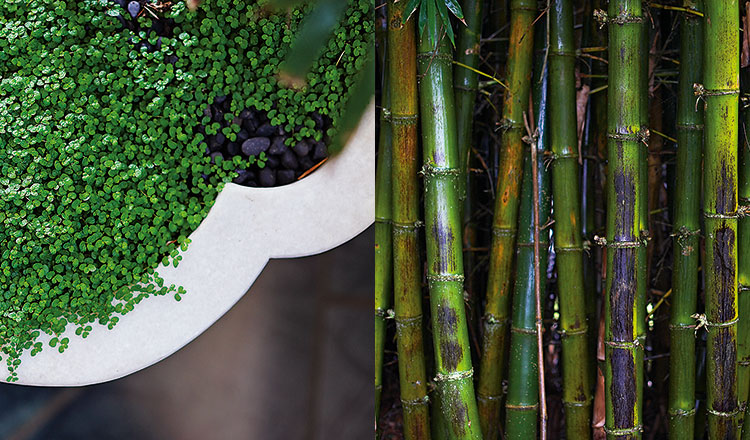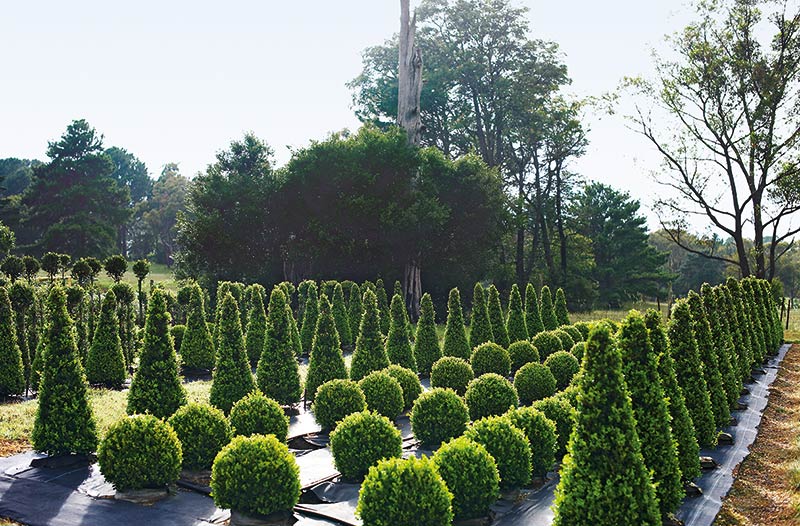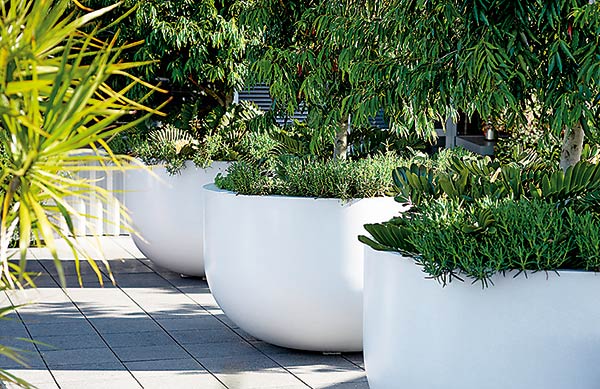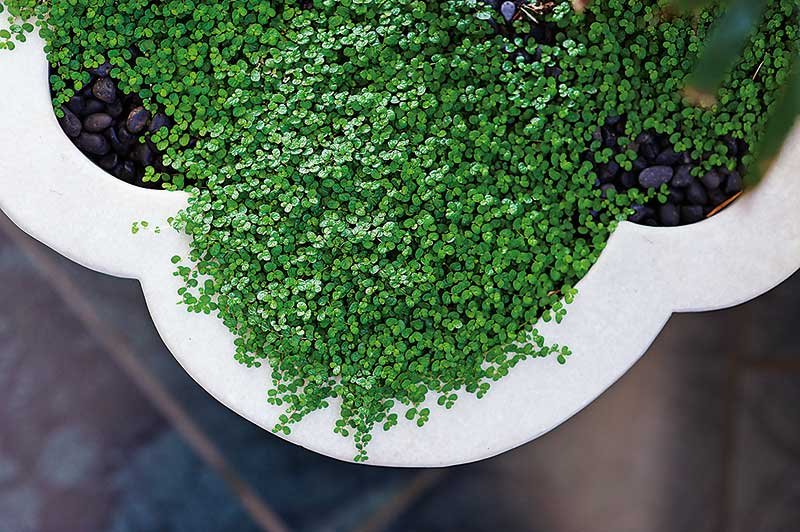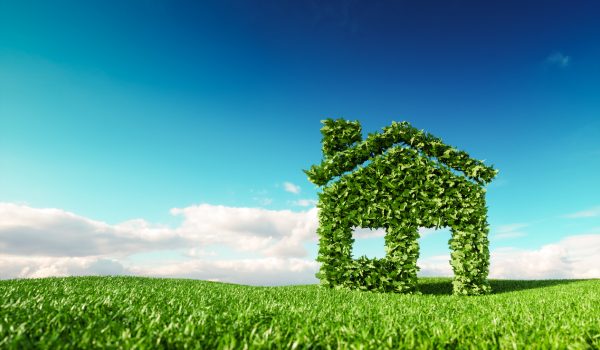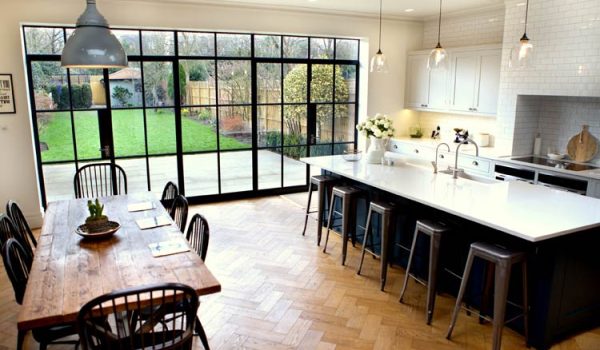Ways To Enhance Your Garden
Create Repetition
Repetition is about making a bold statement, and it is essential to all good design. The human eye likes to see the pattern of repeated objects; it creates strength and structure within a landscape.
That’s why mass-planting will always be more effective than a mixture of plants with no connection to each other. If it works, do it again and then again if necessary. That doesn’t mean that it all has to look the same, as contrast between foliage types is vital, but I think one of the worst things to see in a garden is a bit of this and a bit of that – it’s dreadful!
You may choose to repeat the same pot; a series of three or five will make a bolder statement, and create a sense of continuity, consistency and connection. It can also create a sense of balance, and give structure to a more freeform arrangement elsewhere in the same space.
Here at Philip’s nursery the repeated plantings create massive visual impact. You could do something similar in a small space.
There are lots of ways you can incorporate repetition into small spaces – it might be as simple as a custom rectangular planter with three striking Agave ocahui specimens surrounded by a mass of common jade.
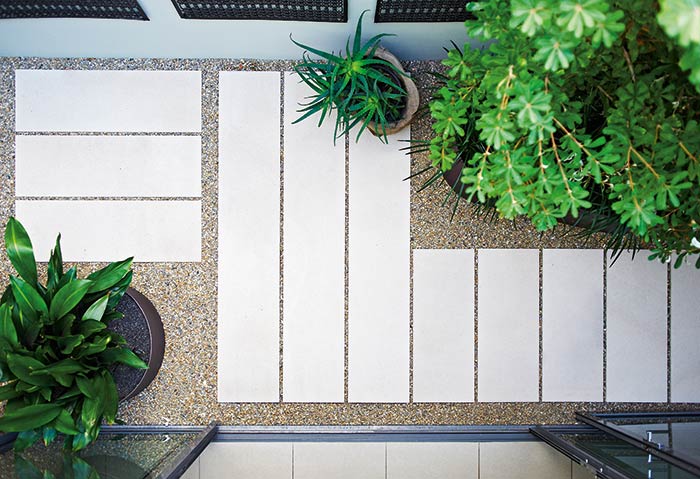 At the townhouse in Walsh Bay, the repetition of this sandstone paving helps tie the space together by creating a strong, simple pattern. The orientation of the stone also stretches out the narrow space, appearing to give it more width.
At the townhouse in Walsh Bay, the repetition of this sandstone paving helps tie the space together by creating a strong, simple pattern. The orientation of the stone also stretches out the narrow space, appearing to give it more width.
On the balcony at Darling Point the repetition of common jade with Dichondra ‘Silver Falls’ in the trough adds structure and looks chic.
At the Australian Film, Television and Radio School, using a series of oversized planters filled with exactly the same plants created structure on the rooftop.
Create Texture
It’s important to think about how you can use contrasting textures to enhance your garden by creating tension and thus adding interest to the landscape. You might place a plant with a large, open foliage next to one with a small, clumping one, or you might put a slick, white, contemporary planter next to an old terra- cotta or brass urn.
Try using a weathered, rough-textured piece of stone as a backdrop to a striking succulent or planting a spiky agave next to a soft, fleshy jade tree – contrasting a spiky foliage plant with something softer helps one to stand out from the other. You can also introduce a contrast in textures to your ornamentation – an old, metal screen might look great on a slick, rendered wall, for instance.
Extract from the book Garden Life by Richard Unsworth, with photography by Nicholas Watt and Richard Unsworth, published by Lantern rrp $49.99.

